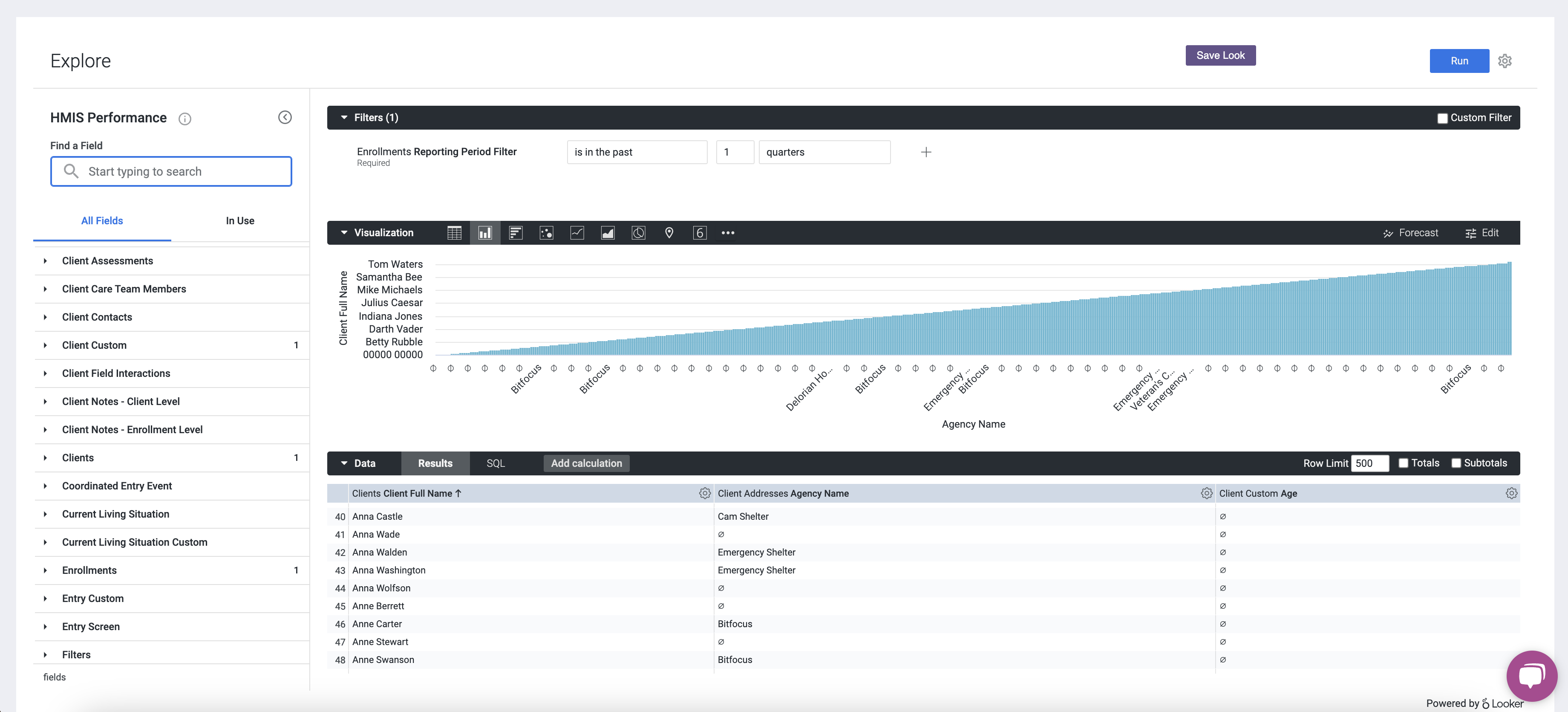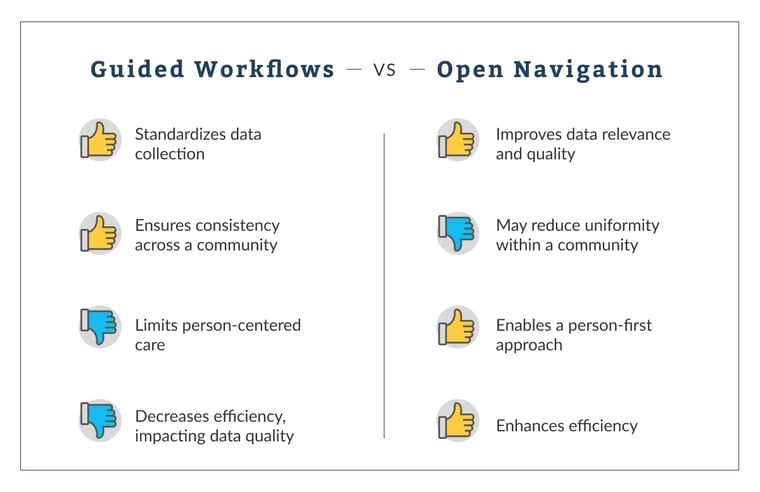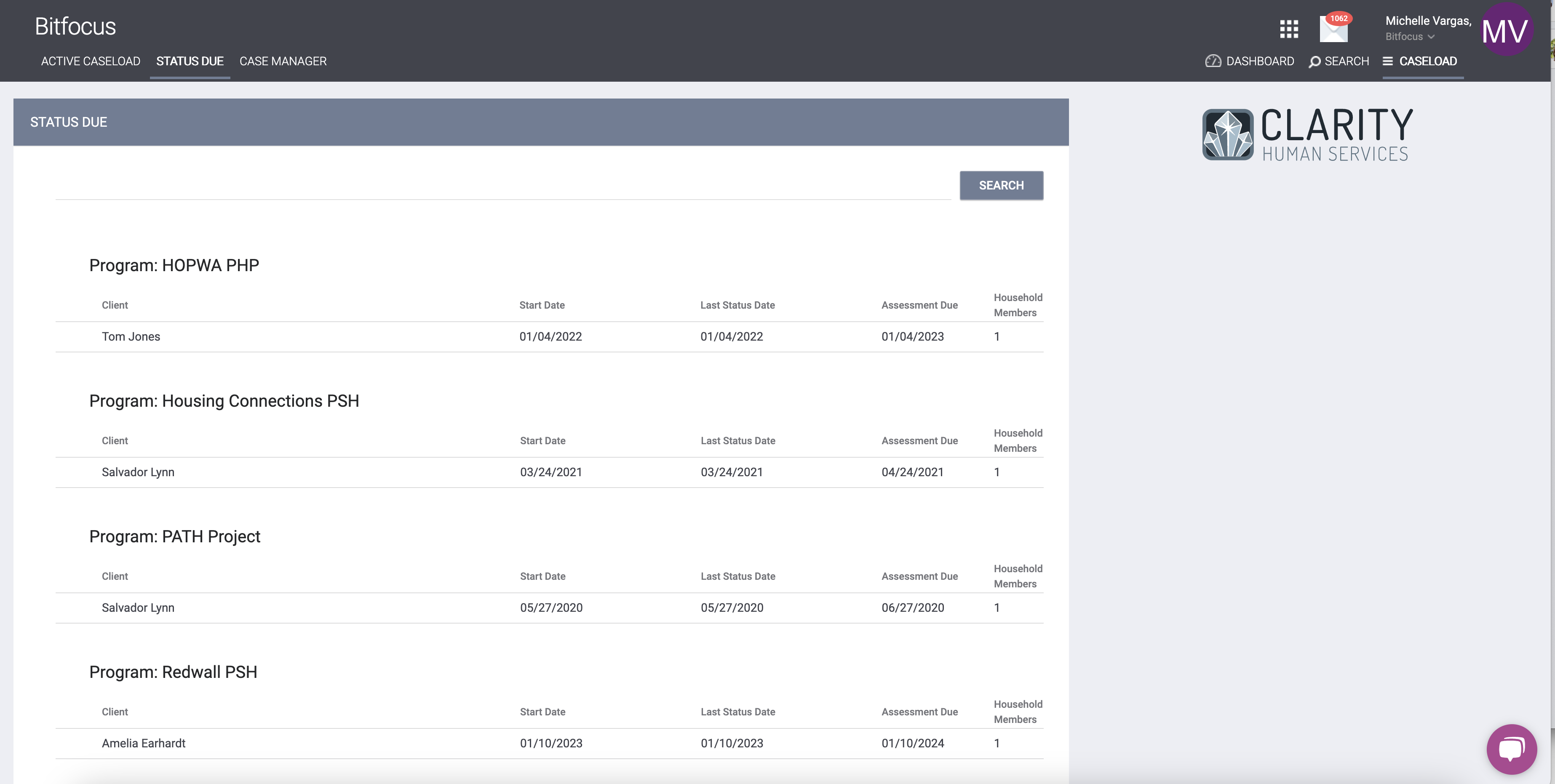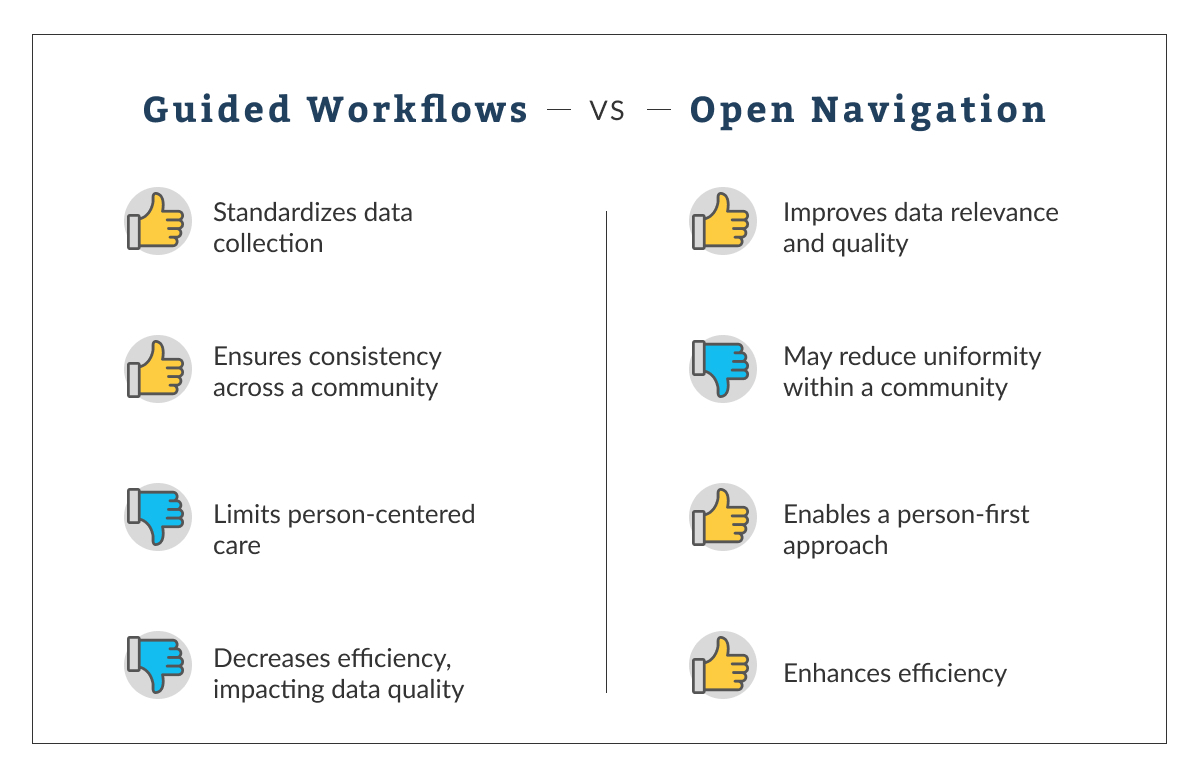Strong data quality is the foundation of excellent community care.
When you have high data quality in your system, you’ll have a powerful grasp of crucial information about your clients: their locations, most pressing needs, unique stories, and more. But what’s the best way to reach your data quality goals while minimizing the burden on case managers and clients?
The typical HMIS takes a structured approach to inputting data, where fields are rigid and the collection of information is controlled. While there are some virtues to this approach — we’ll touch on them shortly — we’ve found that the flexibility of open navigation facilitates the collection and maintenance of cleaner, more complete data.
In this piece, we’ll review some of the key features that make this possible (including things like field requirements, conditional logic, and tooltip text, which are far more interesting than they sound!). We’ll also take a look at how we’ve balanced the need for structure with the benefits of customization in our HMIS, Clarity Human Services, and explore how these two approaches fit into the evolving landscape of human services.
Let’s jump in!
The Case for Flexible Navigation in HMIS
Though there are patterns to homelessness, each client’s journey and needs are unique. They have different backgrounds, perspectives, trust levels, eligibility for certain programs, and so on. All of these variables can impact the services and resources you offer to a client, as well as the information a caseworker might input into their system.
Because of these variabilities, a one-size-fits-all approach to information gathering isn’t as effective as a flexible approach. Guided workflows can limit a community’s ability to provide unique, person-centered care. Conversely, open navigation empowers communities to align their data collection practices with the specific needs of programs and the people they serve, which is particularly valuable for case managers who need to adhere to HUD data standards but shouldn’t be strictly limited by them.
In a nutshell, HMIS users need a solution that’s as adaptable as the communities they serve. Open navigation can help make it happen.
How Clarity Balances Flexibility With Structure
Naturally, there’s a limit to the amount of flexibility that’s healthy in an HMIS! Some degree of structure is necessary to guarantee top-notch data quality and ensure you have the information you need to care for your clients.
As HMIS administrators ourselves, we designed our software in response to what we wanted and needed: efficiency, versatility, and user-friendliness. Above all, we wanted our technology to help our users provide stellar care, which led us to create a system that uniquely merges open navigation with structured guidance.
Here’s a quick walkthrough of the tools our team at Bitfocus uses to configure workflows and improve data collection. (We often refer to these tools as “guardrails,” because they help keep your data on the right track!)
Data-Enhancing Features of Clarity Human Services
|
Field constraints and conditional logic ensure that only relevant data fields are displayed. For example, if a user indicates that a client is a veteran, a series of veteran-related questions will follow. Otherwise, those questions remain hidden |
|
|
Tooltip text helps field workers understand the intent behind questions and communicate them effectively to clients. This text, which appears when a cursor hovers over the field, might offer advice on asking a hard question or give on-the-spot guidance for providing trauma-informed care |
|
|
Data cascading prevents duplication of efforts and contributes to data consistency. If a client has already answered a question in a past assessment, that information will auto-populate in follow-up assessments, preventing clients from repeating themselves and building trust between clients and providers. |
|
|
Pre-built, customizable program templates with a simple drag-and-drop screen editor allow you to efficiently manage diverse program types and make sure that all necessary information is captured. |
|
|
Robust custom reporting tools can help you track specific data points, identify trends, and monitor system performance over time. |
|
|
Warnings based on sophisticated criteria across fields and screens will inform you of potential issues in your data. |
|
Data-Enhancing Features of Clarity Human Services
Clarity is also equipped with several canned reports and sophisticated data analysis tools. These enable system administrators to keep an eye on data quality and confidently adhere to standards and workflows. Clarity even allows you to schedule the generation of reports, which can then be sent to end users assisting with data correction.

Understanding the Trade-Offs of Structured Guided Workflows
There’s an inherent tension between structured workflows and open navigation. If your workflows are ill-defined, you’ll miss crucial care-empowering information. If they’re too strict, you won’t be able to shape them to suit your community’s specific needs.
Let’s check out the major pros and cons of each approach.

Navigating this tension is all about balance. The Bitfocus team is constantly looking for ways to upgrade Clarity HMIS to find the sweet spot and help our customers save time and energy.
The Impact on Case Management and Compliance
As you navigate your HMIS (or search for a new solution that’s a better fit), you should keep in mind that simply having nifty features isn’t enough. Whether your HMIS favors guided workflows or open navigation, your tools ought to improve case management and help you achieve and maintain compliance.
In addition to the tools we touched on above, Clarity provides several built-in “checks” to ensure you don’t miss a deadline or valuable information.
Our Caseload tab helps users track upcoming assessment due dates and reminds them to complete enrollment information for all household members. If the Current Living Situation assessment is required upon enrollment for the program, the Assessments tab will display once the enrollment information is completed and saved. Additionally, when a HUD-required annual assessment is due in a client record, Clarity sends an email that notifies the staff member assigned to the enrollment that the due date is approaching.

Clarity is also equipped with automated functionality like auto exit to permanent destination, auto exit due to inactivity, expiration referral threshold, and more, keeping program rosters and community waitlists up to date.
To help you meet established standards, Clarity provides templates for HMIS federal partner programs that are primed with all the required data elements. This ensures that the program setup is compliant from the start, and you can leverage reporting tools to monitor compliance as time passes.
Navigating The Evolving Landscape of Community Care
As technology rapidly advances, opportunities for providing better care abound.
Certainly, the change can be daunting — and adjusting on the fly isn’t easy. But with the right tools and an HMIS that enables person-centric care, you can meet clients where they are and efficiently connect them with much-needed resources and housing.
At Bitfocus, we believe that an adaptive, innovative mindset is the key to staying on top of emerging trends in the field of human services. A case management experience that’s intuitive and customizable, an outreach platform that facilitates seamless client engagement, in-depth reporting that includes custom, pre-built, and federal reports — these are all must-haves for your HMIS.
As you charge into the future of human services, contact our team at info@bitfocus.com with any questions, thoughts, or feedback. We’re always eager to strike up a productive conversation about providing person-first care.
Strengthen Your Data With Clarity HMIS
When every data point represents a real person, we owe it to them to tell their story accurately. Superb data quality is paramount. Through the perfect balance of customizable and data-enhancing features, our team at Bitfocus has designed Clarity HMIS to help you achieve A+ data quality so you can provide exceptional community care.
If you’d like to hear more about our intuitive, user-friendly HMIS, schedule a consultation with our team today. We’ll make it informative and fun — we promise!
/logo.png)
/worry/logo-small-new.png)

/arc-white-down.png)
